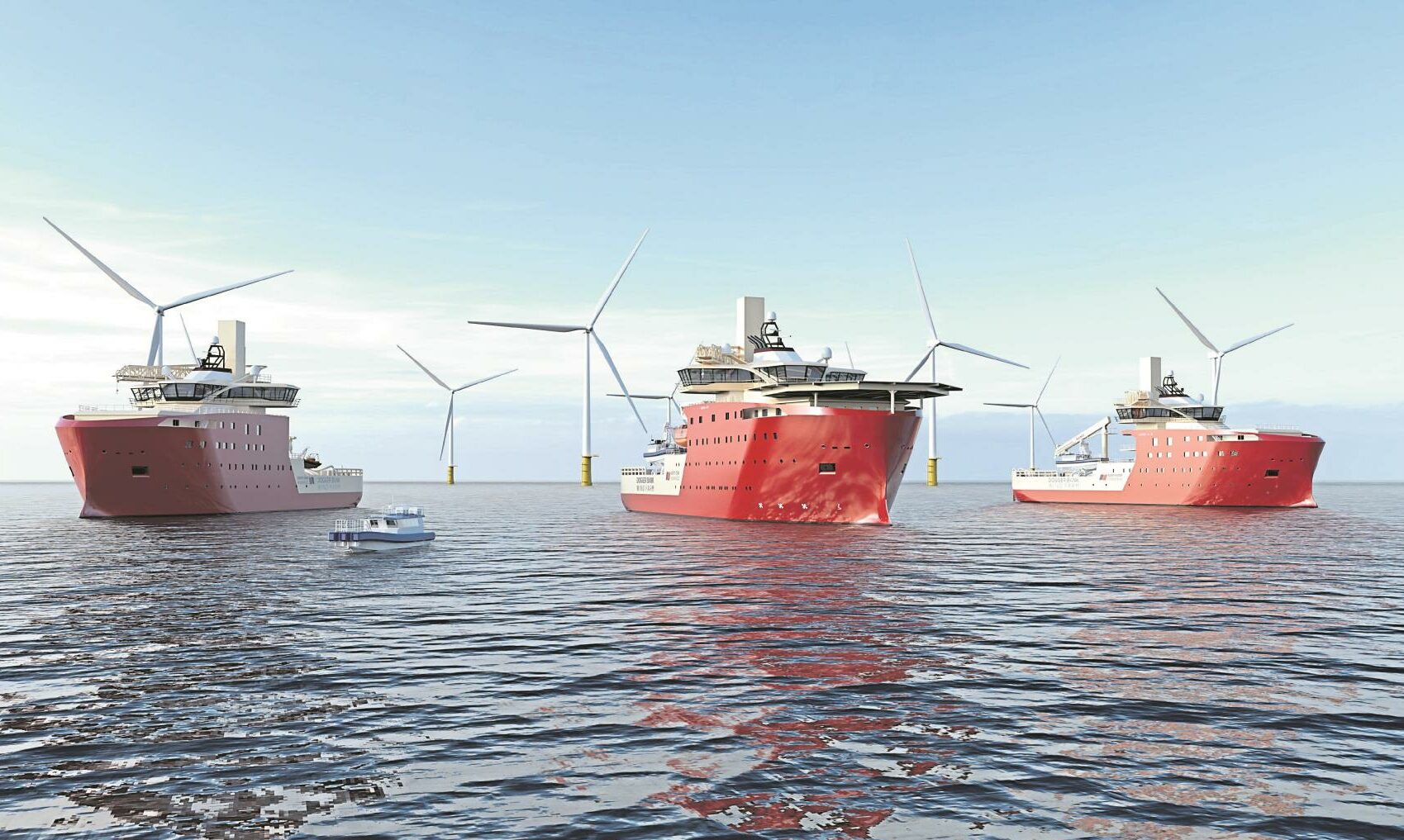
Demand for offshore wind turbine installation vessels is forecast to become a significant issue over the next few years and may affect the pace of development of offshore wind farms.
By 2024, some analysts predict that demand for wind turbine installation vessels may outpace supply.
The situation is exacerbated by the trend towards larger and heavier wind power turbines. In turn, this has made some wind turbine installation vessels (some of which have only been built in recent years) obsolete. As wind farm developers continue to favour larger turbines, a new generation of purpose-built vessels will be required in order to meet demand.
Adapting existing turbine installation vessels is likely to be expensive, time-consuming and in some cases impossible. Market demand is likely to be for vessels with a larger deck area which can carry more turbines per trip – a feature which will significantly improve operating efficiency and reduce overall project costs.
Jack-up installation vessels are likely to be less susceptible to weather related delays than other forms of wind turbine installation vessel, which in turn improves efficiency levels.
The availability of vessels to service offshore wind farm construction in the US is limited by the application of the Jones Act. This piece of legislation dictates that ships moving between two points in the US must be built, owned, crewed and registered in the US. This is likely to prove a challenge to the US plans to substantially increase domestic offshore wind energy capacity by 2030. Other jurisdictions such as China and Japan also have restrictions on the use of foreign flagged vessels in relation to offshore wind farm construction activities.
The amount of offshore wind capacity (both from fixed and floating turbines) added each year needs to substantially increase by 2030 in order to ensure that the requirements of the Paris Climate Agreement are met. In order to ensure this objective is met, more wind turbine installation vessels will be required in a short timescale. This presents a clear opportunity to vessel owners.
However, new vessel construction projects are not without their challenges given the significant cost of these vessels and the lack of shipyards capable of constructing this type of vessel. Other floating infrastructure, such as tugs and barges, are also likely to play their part in realising offshore construction projects.
The increasing distance of offshore wind farms from shore is posing a challenge in connection with operations and maintenance vessels. Service operation vessels (SOVs) are becoming more common within the offshore wind industry in connection with the execution of operation and maintenance activities. SOVs are required, as an alternative to crew transfer vessels (CTVs), due to the distance of many offshore wind farms from the shore.
Originally, some SOVs were oil and gas industry vessels but there is an increasing trend towards the construction of vessels specifically for deployment on offshore wind applications. SOVs offer clear advantages over CTVs – SOVs can stay at sea for longer periods of time, coperate in poorer weather conditions, cope with more significant wave heights and carry more personnel on board.
Many purpose-built SOVs are equipped with specialist walk to work systems, enabling personnel to transfer to offshore wind turbines directly from the SOV, as well as helipads, while daughter craft are frequently provided in tandem. These craft will be used to transport personnel to and from offshore wind turbines, and their manoeuvrability provides very useful additional capability alongside SOVs.
CTVs which are able to service offshore wind farms are also in high demand and have the advantage of being fast and manoeuvrable. Recent months have seen increasing investment in this type of vessel. Typically designed to carry 12–24 people, CTVs are an ideal solution in relation to operations and maintenance work for offshore wind turbines which are situated close to shore.
Skilled and experienced personnel who are able to operate vessels efficiently and safely in very demanding environments are likely to be at a premium. Mere ownership of suitable vessels will not be enough to satisfy market appetite. Local content rules in relation to vessel crews which apply in some jurisdictions are a further issue which vessel owners need to navigate.
Demand is likely to be for vessels powered by lower carbon solutions. There is an increasing trend towards CTVs and SOVs being designed to utilise hybrid (electric and traditional fuel) technology. Hydrogen and ammonia may also be used more commonly as vessel fuels in the future.
Existing vessel owners will need to move quickly to benefit from the opportunities presented by offshore wind farms.
